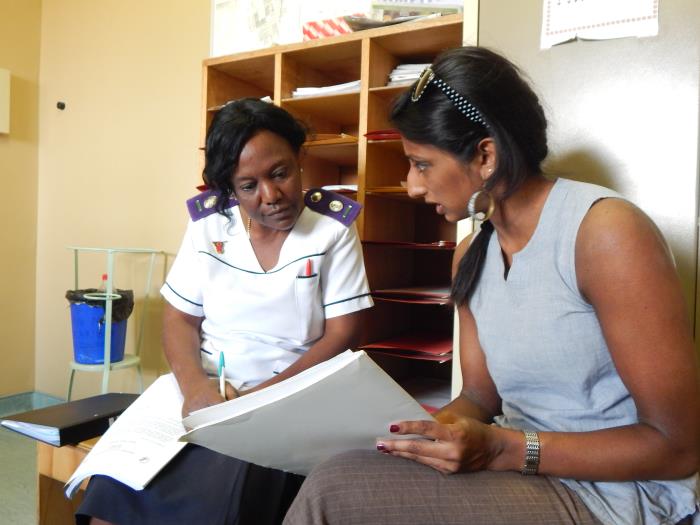
Featuring our Faculty: Why Aren’t More Women Taking PrEP?
While the bulk of new HIV infections in the U.S. happen among men who have sex with men, women contribute a significant number of new infections every year; in 2013, over 9,000 women in the U.S. were estimated to have contracted HIV. Yet women at risk for HIV have been slow to adopt pre-exposure prophylaxis (PrEP) in order to reduce their risk. Compared to rates of PrEP use by men who have sex with men, which after a slow start in 2012 are taking off—rates of PrEP use among women still seems to languish. Now, research points to one reason why—many women may not be aware that PrEP exists and is an option available to them.
To find out if women who could benefit from PrEP know about it, how they’re talking about it, and how likely they’d be to take it and under what circumstances, Judy Auerbach, PhD, and colleagues conducted a series of focus groups in six different cities in the U.S. Half of groups were in the South and actively recruited black or African-American women, given the higher rates of HIV experienced by this population.
In an article published in AIDS Patient Care and STDs, the research team shared what these women said about PrEP during the focus groups.
While over half (58%) of the participants had ever been tested for HIV, “almost none” of the women had ever heard of PrEP before the focus group session.
Auerbach wasn’t necessarily surprised by this finding. She says without hesitation that—across the board—there’s a lack of awareness about PrEP among women who may be at risk of HIV. “That was the primary finding that came out of our focus group study. Women who you’d define as ‘at-risk’ in the U.S. had never even heard of it [PrEP] and were actually kind of pissed off that they hadn’t.”
Many women, once they learned about PrEP and how it worked, reported that they would consider taking PrEP provided that it is covered by health insurance, works reasonably well to prevent infection, and does not cause significant side effects. They also expressed interest in PrEP as a woman-controlled strategy.
“Mistrust of men was pretty solid—in some groups more than others and in some locations more than others. There was mistrust but also a certain benign acceptance at the same time—as in, ‘They’re men, this is what they do. I don’t trust him, so I need something that I can use to protect myself,’” explains Auerbach.
Women in the focus groups were mindful of the community health organizations (many of which helped organize and recruit women into the focus group study) and reported having good relationships with a primary care physician or OB-GYN. The majority of women hadn’t heard about PrEP from either source, though, which led them to raise questions about how knowledgeable these trusted sources of health information actually were about PrEP. “They said—‘well, if we’re not hearing about it, then it must be because they’re not hearing about it. And they’re the ones that are supposed to provide the information,’” explains Auerbach.
For women who are interested in PrEP, and need guidance on how to discuss PrEP with a medical provider, Auerbach suggests a few things. First, she says that women should educate themselves about PrEP. “This is something that women in our focus groups said would be important for them to do, as well. There are a number of resources out there—from PrEPfacts.org, the U.S. Working Group on Women and PrEP, and San Francisco Department of Public Health activities that are PrEP focused and include women.”
Next, she says—once women have gotten the factual information about PrEP, they should take the information with them to their doctor’s visit in order to start a conversation about if they’d be a good candidate for PrEP. “Say, ‘I’ve heard about this, this is what I know and understand, and let’s have a conversation about it.’ And challenge them to make sure they’re up to speed and that they can find a way to make it available,” Auerbach advises.
Overall, Auerbach’s findings don’t discourage her. She says she believes there will be a tipping point, when most women are aware of PrEP—and those who want it are able to access and use it.
“I do think there will be a tipping point. It may be a function of cost, but for most women who’d consider taking PrEP the cost is probably going to be covered at this point through their health insurance or Medicaid. So right now I think the real tipping point will come when we have different methods that are easier to take, such as a long-acting method, so you don’t have to take it as frequently. I think when we have that—and you’ll notice I said when, and not if, because I’m pretty sure we’ll get injectables in particular, and maybe a ring as well—it will make a huge difference. I think the flexibility, the versatility, the range of choices and options will be a really important part of the PrEP story.”
For more, see: Auerbach, J. D., Kinsky, S., Brown, G. and Charles, V. Knowledge, attitudes, and likelihood of pre-exposure prophylaxis (PrEP) use among US women at risk of acquiring HIV. 2015. AIDS Patient Care and STDs.